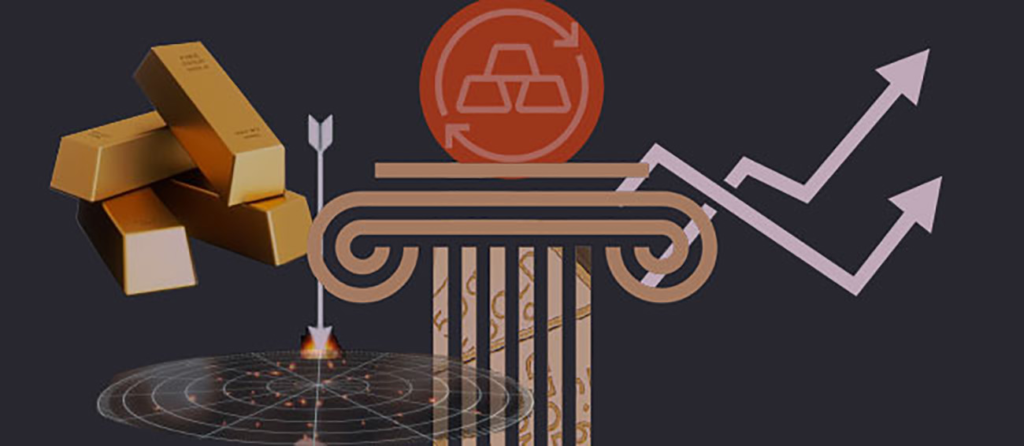Source: CRAIN CURRENCY | Marcus Baram
Jun 15, 2023

KRISTINA RUOTOLO
For centuries, gold has retained an allure as a safe-haven asset, especially during times of turbulence and market volatility.
Family offices and ultra-high-net-worth investors — using gold as part of their asset diversification strategy — have recently helped boost its price, which has increased 35% in the past five years. Traditionally favored by older investors, this time it’s attracting next-gen family office members, gold market analysts say.
“Since late 2022, investors appear to have gravitated toward the precious metal as a way to preserve their wealth and hedge against the risk of a recession later this year,” said Han Tan, chief market analyst at Exinity Group in Abu Dhabi.
Gold is often favored during times of crisis for several reasons. Despite its high price volatility, it is a relatively secure investment and extremely stable in value. Because it often goes against market and interest-rate changes, gold can serve as insurance against economic downturns. That’s partly due to its rarity and limited supply.
As a tangible asset, the precious metal — in the form of gold coins, gold bars or jewelry — protects investors against inflation, said Joseph Cavatoni, North American market strategist for the World Gold Council.
That protection appeals to family offices, which use gold to diversity their assets and as a “shock absorber in their portfolio” during these times of inflation and high interest rates, Cavatoni said. He’s seeing more interest from European family offices versus the U.S. market, though retail sales to consumers have slowed in India and China due to pandemic-related lockdowns.
“We’re seeing ultra-high-net-worth individuals come on the scene and make big purchases,” said Bill Voss, founder of Bullion Box, a subscription service that sends a curated box of precious metals every month. One favored strategy for investors, he said, involves building a portfolio that is one-third bullion, one-third semirare numismatic coins and one-third rare coins.
“Secondarily,” Voss said, “we’re being approached by family offices and other groups about acquisition opportunities in the sector.”
A major reason for gold’s recent price increase is that it’s being snapped up by more central banks around the world as part of their reserves portfolio, and it’s being used to manufacture electronics and many consumer products like cellphones, Cavatoni said.
Younger wealthy investors who may have been burned by the collapse of the crypto market also are increasingly turning to precious metals — including gold, silver and platinum.
“We’re getting so many requests from younger generations for precious metals,” Voss said. “It used to always be 50-something-and-older customers, but now it’s skewing much lower.”
Part of gold’s appeal is its tangible quality as a beautiful physical asset, Cavatoni said. For many people, it’s about “I can get a little bling and have it earn at the same time,” he said.
People who don’t necessarily trust the banks right now “want to hold something in their hands,” Voss said. “If more banks crash, they know they have something to go to and put their hands on.”
So far, the outlook for gold looks positive. Spot gold has advanced by more than 7% so far this year, said Exinity Group’s Tan, “on hopes that the Fed is approaching the end of the current rate-hike cycle.”
All that glitters for now just may be gold.
AUTHOR Marcus Baram
Marcus Baram is a contributing editor at Crain Currency, where he covers the intersection of finance and politics. Prior to joining Crain Currency, Baram was a staff writer at Fast Company and an editor at Huff Post. He has also written for outlets such as The New York Times, The Atlantic, and Vice. Baram is an expert on economic policy and has a deep understanding of the ways in which politics shapes the global financial system. In his role at Crain Currency, he brings a unique perspective to the complex and ever-evolving world of finance. With his keen analysis and clear writing, Baram helps readers make sense of the important issues impacting the economy today.